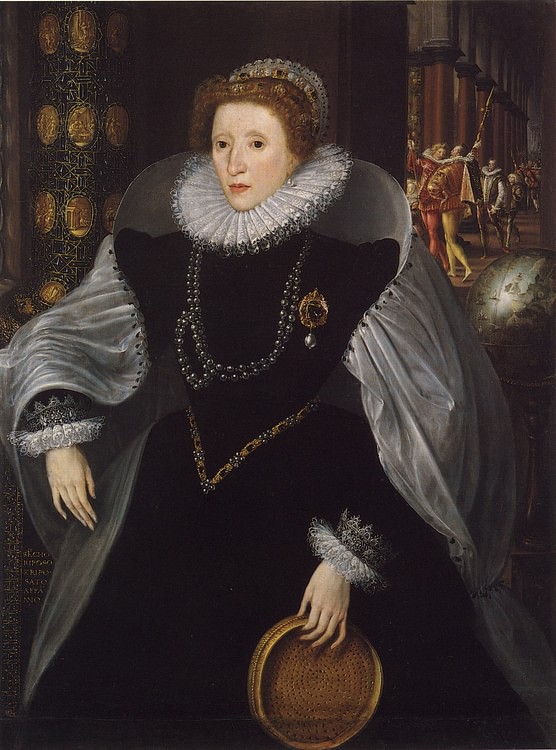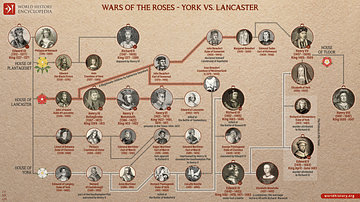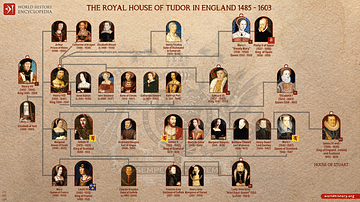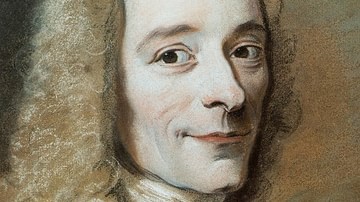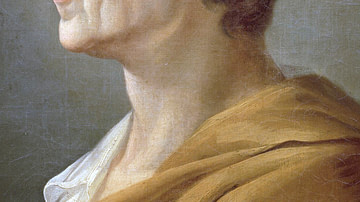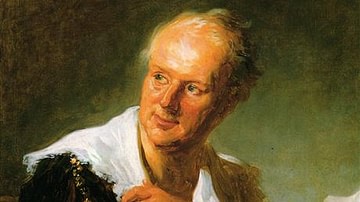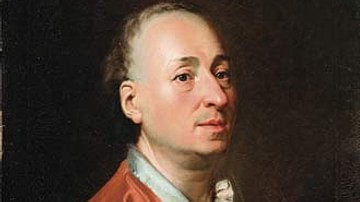Illustration
A 1579-83 CE portrait by Quentin Metsys the Younger of Elizabeth I of England (r. 1588-1603 CE). It is known as the 'Sieve Portrait' because the queen holds a large sieve in her left hand which is a traditional symbol of chastity. The queen is, therefore, identifying herself as the Vestal Virgin Tuccia from Roman mythology. Tuccia had once demonstrated her chastity by carrying water from the Tiber River to a temple using only a sieve. The black and white dress of the queen, and the black pearls, are the colours symbolic of purity and constancy.
There is another reference to Roman mythology in the column on the left which has scenes from the Aeneas and Dido story. Aeneas abandoned the Queen of Carthage and so chose power over personal happiness. Elizabeth, therefore, is demonstrating that she, too, has sacrificed personal relationships in order to rule justly for her people. The right of the painting shows a globe with ships, reminding of England's naval power. Finally, the group of admirers behind the queen are courtiers, one of whom is Elizabeth's favourite of the period, Sir Christopher Hatton, shown in the centre.
Pinacoteca Nazionale, Sienna, Italy.
Cite This Work
APA Style
Younger, Q. M. t. (2020, May 28). Elizabeth I Sieve Portrait. World History Encyclopedia. Retrieved from https://www.worldhistory.org/image/12316/elizabeth-i-sieve-portrait/
Chicago Style
Younger, Quentin Metsys the. "Elizabeth I Sieve Portrait." World History Encyclopedia. Last modified May 28, 2020. https://www.worldhistory.org/image/12316/elizabeth-i-sieve-portrait/.
MLA Style
Younger, Quentin Metsys the. "Elizabeth I Sieve Portrait." World History Encyclopedia. World History Encyclopedia, 28 May 2020. Web. 22 Apr 2024.
